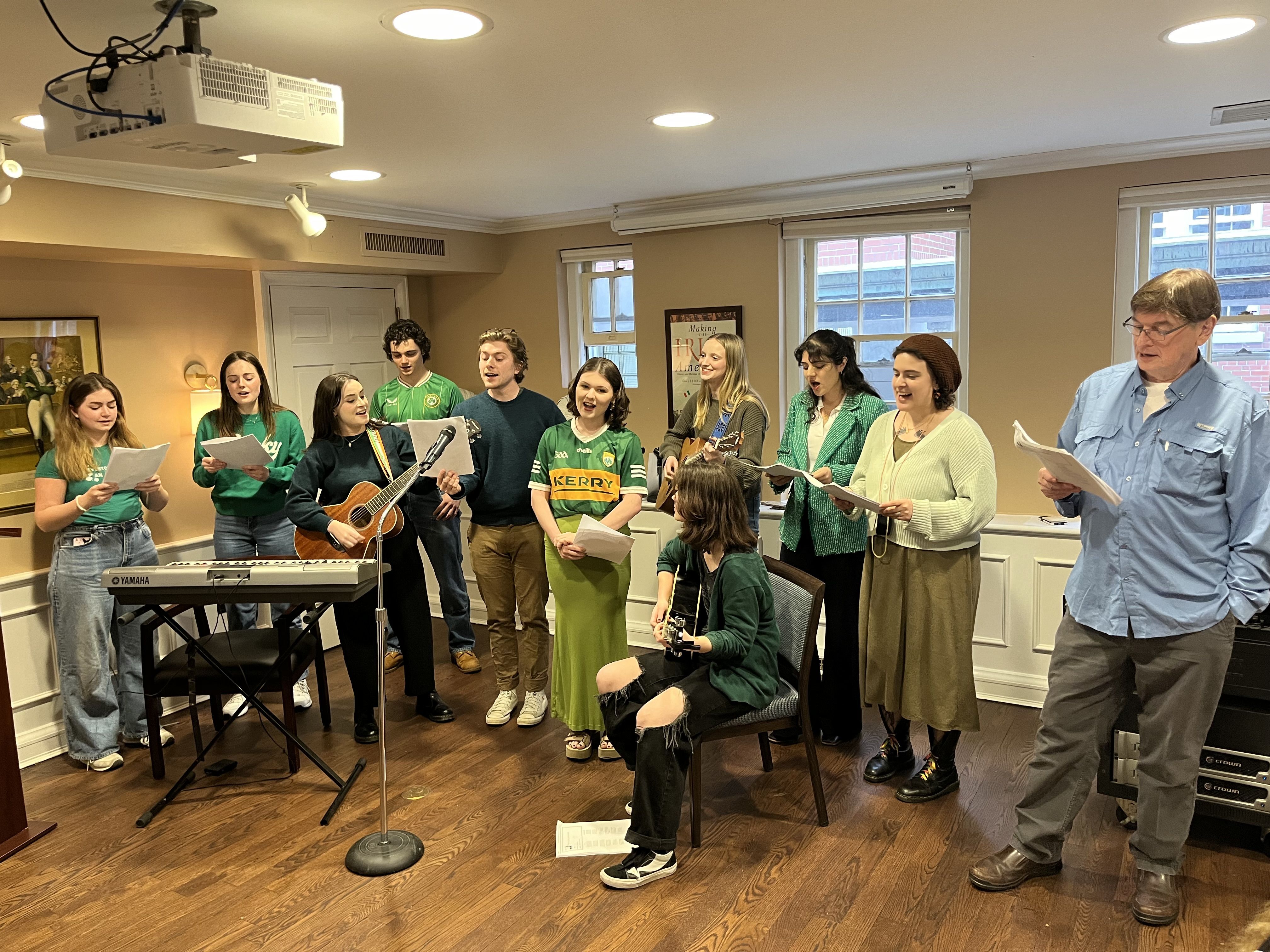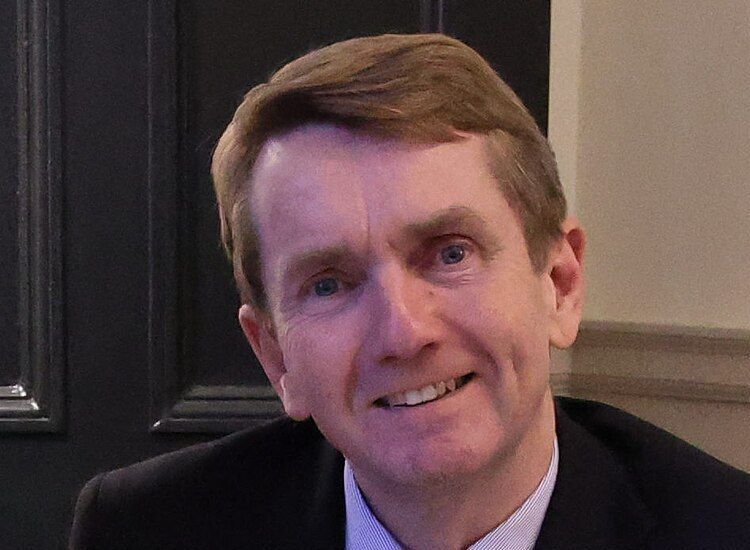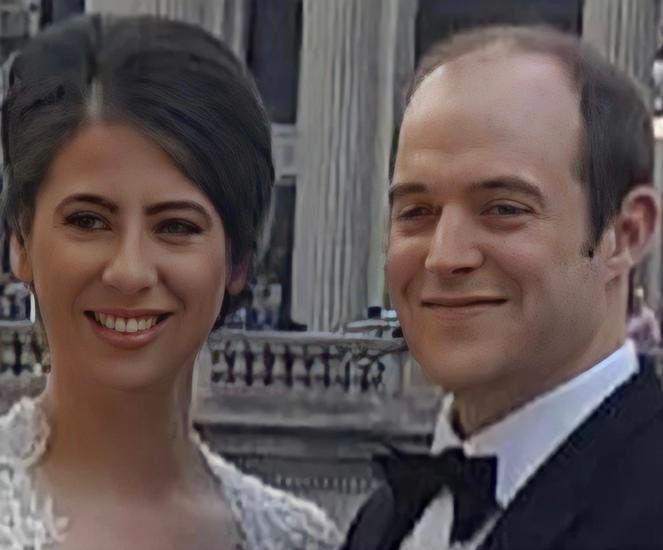As early morning April showers faded into memory, an afternoon sunlight stretched its limbs across Washington Square Park, falling gently upon the door of Glucksman Ireland House, in New York’s Greenwich Village.
And within that NYU house of history, literature, language and learning, a scaifte mór of all ages and abilities gathered to celebrate, sing, and speak the Irish language, during its annual Lá na Gaeilge. 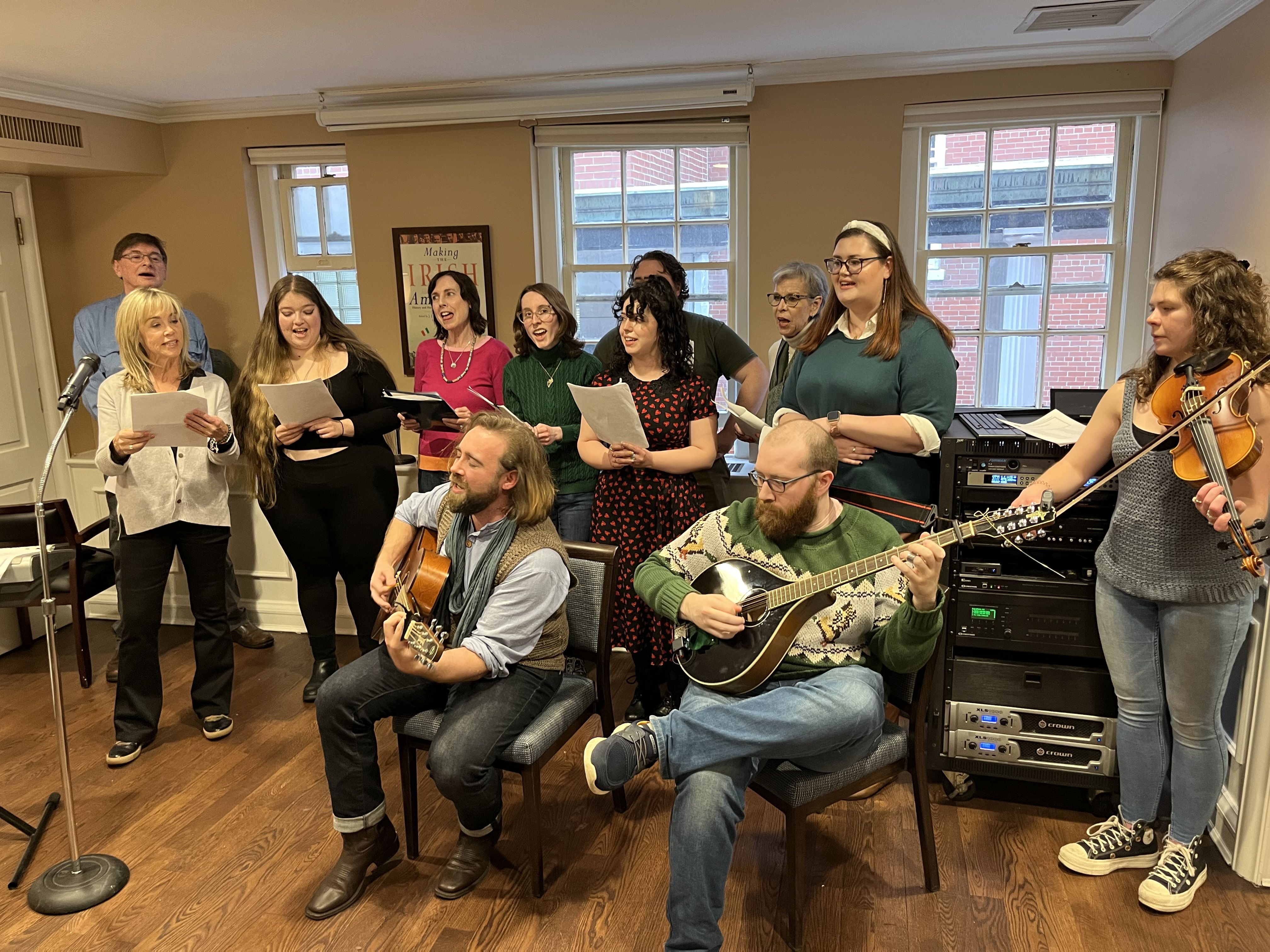
And what a day it was! Three levels of Irish language courses were offered throughout the house, so those with Irish skills and none were all catered for and warmly welcomed. Well-known teachers, Siobhán Ní Chiobháin, Paul Ferris, and Séamus Ó Fianghusa all brought their expertise, fun, and flavor to the ranganna. 
This Lá na Gaeilge has been running for approximately 20 years, and is free, thanks to a generous grant from the Irish Department of Culture and the Gaeltacht.
Professor Pádraig Ó Cearúill, a native of Gweedore, Donegal, and recipient of The Irish Echo 2022 Irish Community Champions Award, has been the cornerstone of the Irish language, music, and culture programs offered at NYU and Glucksman Ireland House since it began 30 years ago.
“More people are aware of the language and aware of the classes available, and the fact that this open day is free,” Ó Cearúill told the Irish Echo.
B'é inné an cheád lá den Samhradh in Éirinn. Tá go leor bealaí le Gaeilge a úsáid sa ghnó. Tá sé chomh héasca é a dhéanamh agus taitneoidh sé go mór le bhur gcuid custaiméirí agus leis na turasóirí freisin a thabharfaidh a n-aghaidh ar Mhaigh Eo le linn an tSamhraidh. #Summer pic.twitter.com/wZzLp1ANGm
— Gnó Mhaigh Eo (@Gno_MhaighEo) May 2, 2024
Regina Femminella, a Spanish language teacher from New Jersey, was initially shocked to discover that Irish was still spoken but wanted to learn it as her grandparents were from Ireland. She has been learning for some time now.
“The Lá na Gaeilge is something I’ve been coming to here for a couple of years,” said Regina, “and it’s always been a fantastic event and it always has amazing instructors.”
Her grandmother passed when Regina was young, and “I never even knew it, but my grandmother was líofa sa Ghaeilge but unfortunately, she had not raised her own children with any Gaeilge as she felt it would be a disservice to them,” she said.
The Irish language is taught at both undergraduate and graduate level at NYU, and they have many students continually wanting to learn the language.
“I first came to take Pádraig Ó Cearúill’s Irish class that was generously extended to the community for practically nothing,” said Ellen O’Brien Kelly of New Jersey. “And just by being in this building and being in his classroom, I felt connected to my ancestry and my grandparents, who spoke Irish,” she enthused.
“Last semester I had 35 people between two beginner classes,” said Ó Cearúill.
They also have a summer program, which has been running since 1998, based in Trinity College Dublin, during June and July. In addition to Trinity, they also “go to the Gaeltachtaí, Belfast, and lots of historic places,” said Ó Cearúill.
A passionate Gaeilgeoir, Irish traditional musician, and much-loved teacher, it was with great sadness, yet pride, that many students, past and present, came not only for the Lá na Gaeilge, but to honor their professor and say slán, as Ó Cearúill retires at the end of this academic year.
Ted Smyth, President of the Advisory Board of Glucksman Ireland House, spoke eloquently and movingly about Ó Cearúill, as he introduced the program and the farewell to Pádraig.
Smyth praised Ó Cearúill as “a distinguished member of the faculty here for 30 years,” who “has introduced a generation of Irish Americans and students from all over the world to the joys, complexities, and depth of Irish poetry, song, music, and prose.”
John Becker, from New York, doesn’t really see himself as an Irish American but loves Ireland and the Irish language and took the intermediate level class during the Lá.
“I remember when I was young my mother told me there was another language in Ireland existed before English, and yes, I was young, but I was shocked by that. And it seemed to me that there’s a whole other kind of identity and a whole different spirit with the Irish language,” said Becker.
Mitchell Manning, originally from Massachusetts, who now lives in New York, has been studying the Irish language for little less than a year, but came to the Lá na Gaeilge, “to be more connected with other people who are Irish learners or native speakers, and to be part of the community,” he said.
There was a very insightful lecture given by Professor Brian Ó Broin, of William Paterson University, New Jersey: ‘Filíocht na Mumhan agus Scéalaíocht Chonnacht – An Béaloideas Beo agus Athbheo,’ ‘Irish Folk Literature and Performance Alive in the Twenty-First Century,’ which really emphasized the work still being carried out today through and for the Irish language.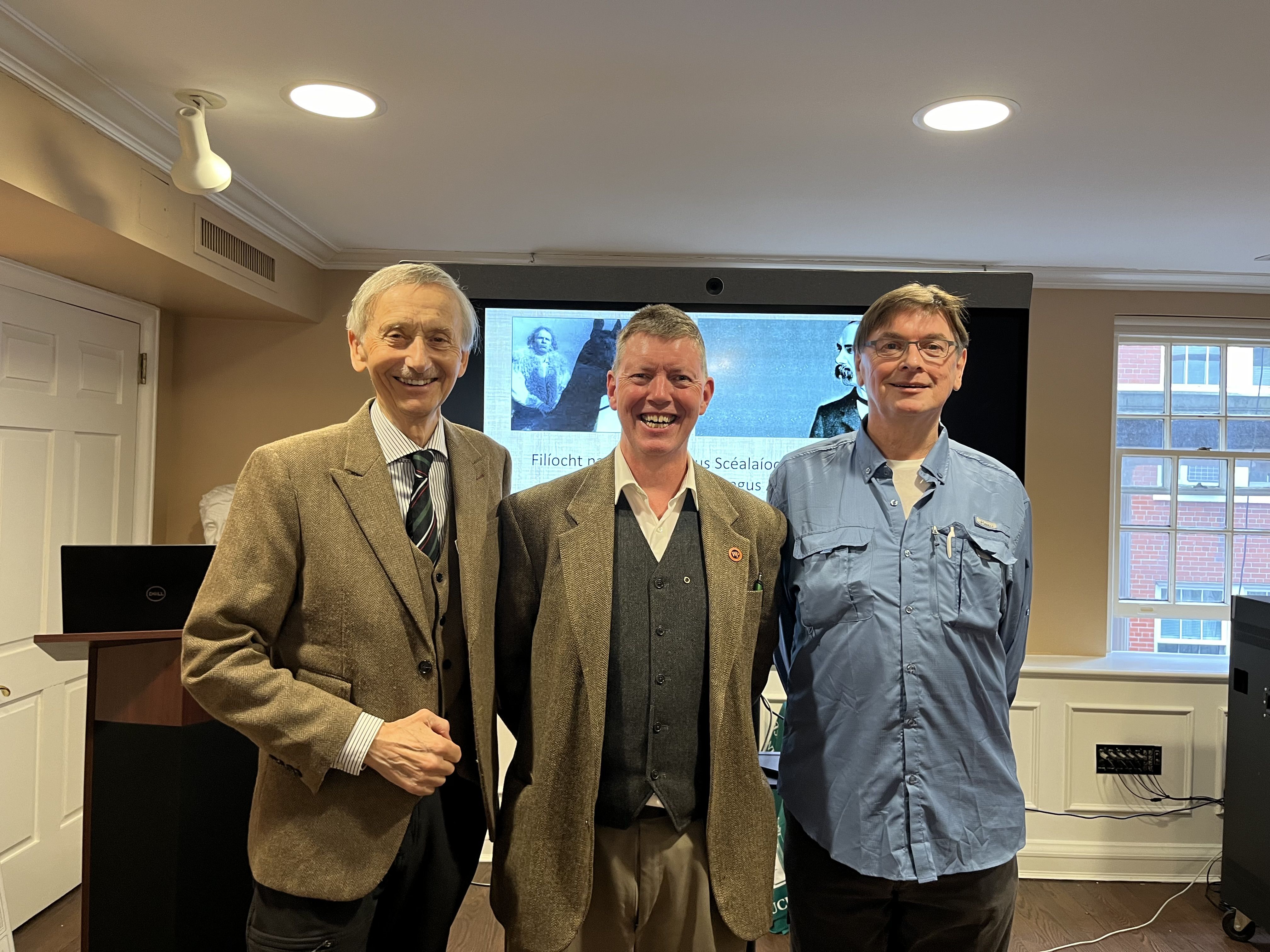
As a beginner in Irish language studies, Manning said he really "enjoyed the lecture" and was very impressed that it was bilingual as it made it fully accessible to him.
It wasn’t lost on those who attended that it was April 13th, on what would have been Seamus Heaney’s 85th birthday. He had an enduring connection with Glucksman Ireland House and its founder, Loretta Brennan Glucksman.
Indeed, there was a great sense of both continuity and history enshrining the Lá na Gaeilge, in the hallowed halls of Glucksman, with great hope for the Irish language. Walls lined with photographs and memory. Ceol, filíocht agus an Ghaeilge abounding, where Irish and American meet, and where history walked.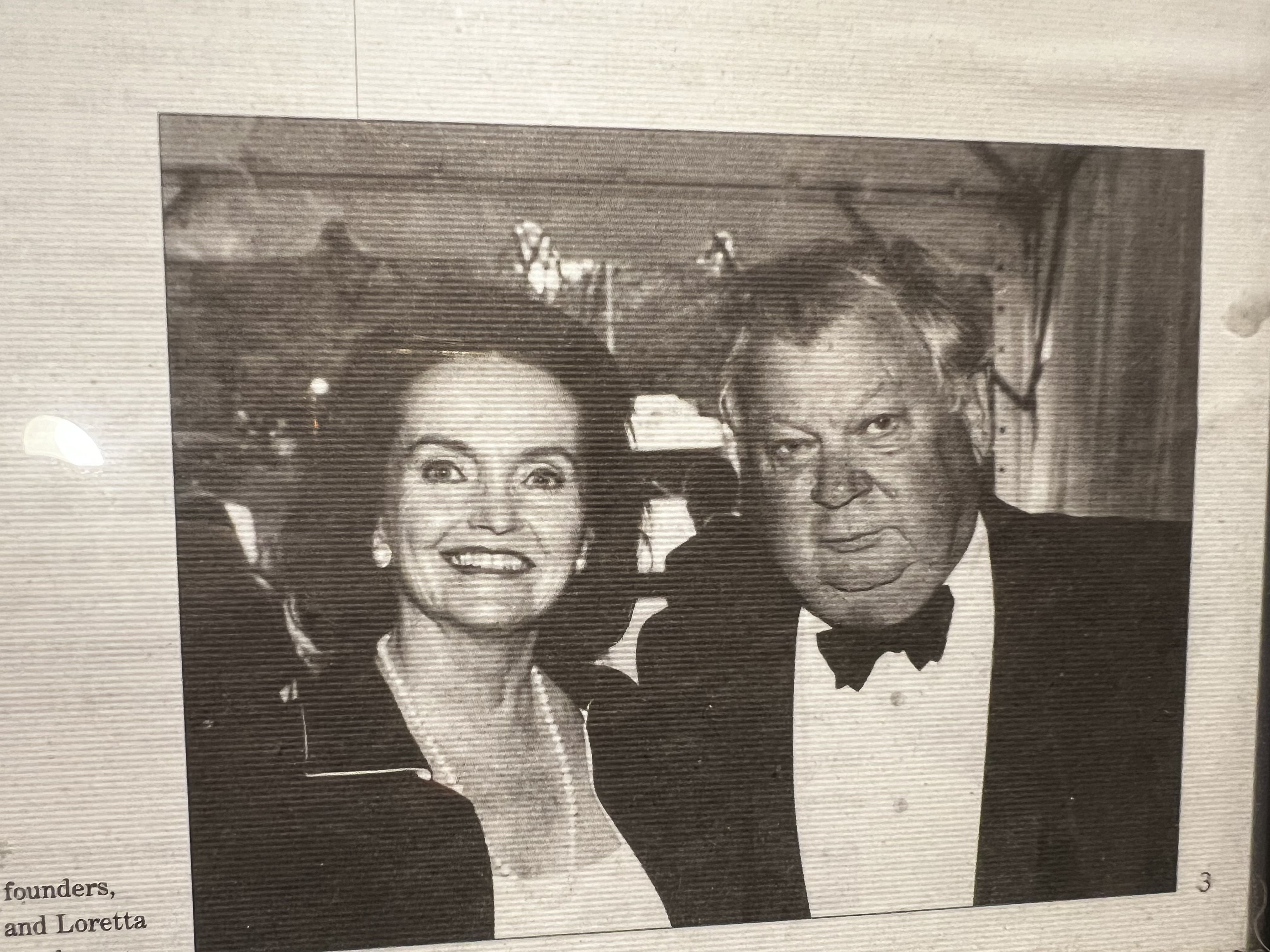
And many found a doorway into the language through music. Glucksman Ireland House was filled with joyful music during the Lá na Gaeilge, with people from every generation singing their hearts out, like they were gathered in the great Gaeltachtaí of Donegal, Muskerry, or An Daingean.
Learned recently or remembered through little snapshots of the mind, everyone found harmony through Téir Abhaile Riú and Oró Sé do Bheatha ‘Bhaile.
“Music is at the heart of the Irish language,” said Lily Moseley from California, now living in New York. “And it’s now how we learn today and connect with other people. Music has that kind of power to translate all boundaries,” she added.
The music connected generations of students, Irish Americans, and Gaeilgeorí as they all joined in one voice to sing and say slán le Pádraig Ó Cearúill.
"The monument for this great man is all around you," said Ted Smyth. "It's all of you."
Music still lingered in the air as pink petals paved the way home, blown from neighboring New York blooms, as the Irish language continues to blossom faoi bhláth in the welcoming community of New York University and Glucksman Ireland House.

